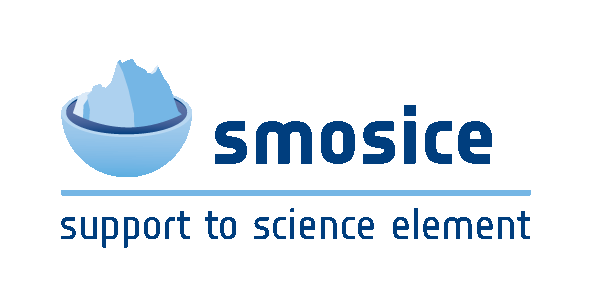|
Size: 2627
Comment:
|
Size: 2628
Comment:
|
| Deletions are marked like this. | Additions are marked like this. |
| Line 39: | Line 39: |
| == ESA project manager== | == ESA project manager == |

General SMOSIce project description
The aim of the SMOSIce study is to develop, improve and validate algorithms for sea ice thickness retrieval from the 1.4 GHz (L-band) data of the European Space Agency's (ESA) Soil Moisture and Ocean Salinity (SMOS) mission. SMOS payload is the Microwave Imaging Radiometer by Aperture Synthesis (MIRAS) measuring the brightness temperature at a range of incidence angles and at different polarizations.
Electromagnetic radiation with wavelengths of 20 cm can emerge from deep inside the sea ice layer. The attenuation mainly depends on the relative brine volume which is a function of ice bulk salinity and temperature. The penetration depth is up to 1.5m for cold low-salinity ice and reduces to a few centimeters for saline sea ice at high temperatures. The potential to derive the ice thickness from L-band radiometry thus depends on sea ice temperature and salinity.
A sea ice emissivity model is an integral part for the retrieval of ice thickness from SMOS measurements. The most simple setup consists of a three layer (ocean-ice-atmosphere) dielectric slab with plane-parallel specular surfaces. The dielectric properties are parameterized as a function of the bulk ice salinity and temperature. The sea ice bulk salinity and ice surface temperature will be taken either from auxiliary measurements or will be parameterized. One main objective of the SMOSIce study is to determine the best solution to define the Algorithm Theoretical Basis Documents (ATBD) for SMOS sea ice retrieval.
Finally, a SMOS sea ice product will be generated and assessed using independent ice thickness measurements. These will include in-situ observations, electromagnetic induction (EM) measurements, and estimates based on infrared and SAR satellite data.
SMOSIce project partners
Participating Institutes
- Institute of Oceanography, University of Hamburg (UHH)
- Institute of Environmental Physics, University of Bremen (UB)
- Alfred Wegener Institute, Bremerhaven (AWI)
- Finnish Meteorological Institute (FMI)
- Danish Meteorological Institute (DMI)
Personnel
- Prof. Dr. Lars Kaleschke (study leader, UHH)
- Dr. Xiangshan Tian-Kunze (UHH)
- Nina Maaß (UHH)
- Dr. Georg Heygster (UB)
- Huanhuan Wang (UB)
- Marcus Huntemann (UB)
- Dr. Stefan Hendricks (AWI)
- Dr. Thomas Krumpen (AWI)
- Dr. Marko Mäkynen (FMI)
- Dr. Rasmus Tonboe (DMI)
Contributor
- Dr. Christian Haas (University of Alberta)
ESA project manager
- Dr. Matthias Drusch
- Dr. Tania Casal
